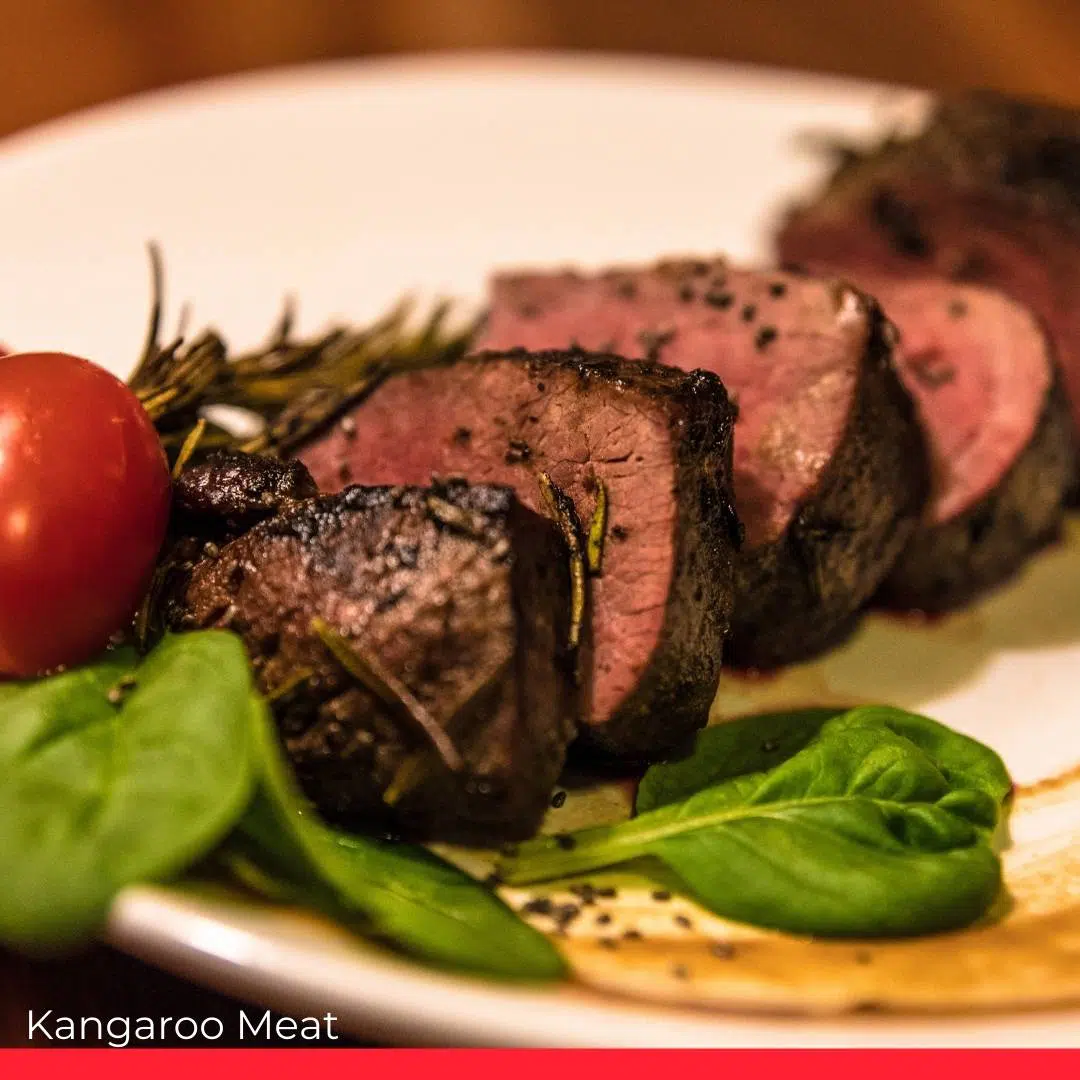
Introduction
Kangaroo meat, a unique delicacy from Down Under, has a rich history of being a staple source of protein for Indigenous Australians. Not only is it deeply rooted in the cultural heritage of the land, but it also offers a plethora of nutritional benefits that make it stand out from other meats. In this article, we will delve into the production of kangaroo meat, explore its exceptional nutritional value, shed light on animal welfare concerns, and appreciate its significance in the traditional Aboriginal diet.
Production of Kangaroo Meat
Kangaroo meat is sourced from the muscular hindquarters of kangaroos, which are native to Australia. The production process involves strict regulations and adherence to sustainable practices to ensure the conservation of kangaroo populations. Licensed hunters are permitted to harvest kangaroos within controlled quotas, promoting a balanced ecosystem and preventing overexploitation.
The harvesting process is carried out with utmost care and respect for the animals. This sustainable approach ensures that the kangaroo population remains stable while also providing a valuable source of income for local communities.
Nutrition and Products
One of the key reasons why kangaroo meat has gained popularity worldwide is its exceptional nutritional profile. It is a powerhouse of protein and boasts an impressively low fat content, approximately 2%. The lean nature of kangaroo meat makes it an excellent choice for health-conscious individuals looking to maintain a balanced diet.
Additionally, kangaroo meat is an excellent source of essential nutrients such as iron, zinc, and omega-3 fatty acids. These nutrients play a vital role in supporting overall health and well-being. Iron is crucial for oxygen transportation in the body, zinc is essential for a robust immune system, and omega-3 fatty acids offer numerous heart health benefits.
In recent years, the market for kangaroo meat has expanded, offering consumers various products such as kangaroo steaks, burgers, sausages, and jerky. The culinary versatility of kangaroo meat has made it an exciting addition to various dishes, both in traditional Australian cuisine and contemporary gourmet creations.
Kangaroo Meat and Animal Welfare
The ethical considerations surrounding the consumption of kangaroo meat have been a topic of debate. However, it is essential to understand that the kangaroo harvesting process is strictly regulated and monitored by the Australian government. These regulations are designed to ensure that the hunting is carried out humanely and with minimal suffering to the animals.
Moreover, supporting the kangaroo meat industry can have a positive impact on animal welfare. When kangaroos are harvested sustainably, it helps prevent overpopulation, which could otherwise lead to food scarcity and health issues within the kangaroo population. By managing the numbers responsibly, the ecosystem remains in balance, benefiting both the kangaroos and the environment.
Kangaroo Meat in Aboriginal Culture
Kangaroo meat holds profound significance in Aboriginal culture, going back thousands of years. Indigenous Australians have revered kangaroos not only as a vital food source but also as an integral part of their spiritual beliefs and storytelling.
The traditional Aboriginal diet primarily revolved around hunting and gathering, with kangaroo meat being a crucial component. The meat provided the necessary sustenance to thrive in the Australian landscape and survive the challenges posed by the harsh environment.
Even today, kangaroo meat continues to be cherished in Indigenous communities as a link to their heritage and a reminder of their strong connection with the land. The preparation and consumption of kangaroo meat in cultural ceremonies and gatherings serve to keep the traditions alive and pass them down to future generations.
Embracing Kangaroo Meat: A Culinary Adventure
With its unique taste and impressive nutritional value, kangaroo meat has found its way into the culinary scene worldwide. Embracing this exotic meat opens up a world of possibilities for chefs and home cooks alike. Here are some mouthwatering kangaroo meat recipes to tantalize your taste buds:
1. Kangaroo Steak with Bush Tomato Chutney
Marinate kangaroo steaks in a blend of olive oil, garlic, and Australian bush spices. Grill the steaks to perfection and serve them with a flavorful bush tomato chutney on the side. The combination of the succulent meat and tangy chutney creates an explosion of flavors.
2. Kangaroo Burger with Quandong Relish
For burger enthusiasts, a kangaroo patty infused with native pepper and topped with quandong relish offers a delightful twist on the classic burger. Quandong, a native Australian fruit, adds a sweet and sour element that perfectly complements the richness of the meat.
3. Kangaroo Sausage Rolls
Put a unique spin on the traditional sausage roll by using kangaroo sausages as the filling. Season the sausages with a mix of aromatic spices and herbs, then encase them in flaky puff pastry. These savory treats are perfect for gatherings and picnics.
4. Kangaroo Jerky
For a healthy and protein-packed snack, try making kangaroo jerky at home. Slice kangaroo meat thinly, marinate it in your favorite blend of spices, and then dehydrate it to achieve the perfect chewy texture. It’s a guilt-free indulgence that will keep you energized throughout the day.
Conclusion
Kangaroo meat is a true Australian treasure that offers a unique culinary experience while being mindful of environmental sustainability and animal welfare. Its remarkable nutritional benefits and cultural significance make it more than just a delicacy; it’s a symbol of heritage and resilience.
As you embark on your culinary journey, exploring the flavors of kangaroo meat, remember to appreciate the cultural heritage it represents and the efforts taken to ensure its sustainable future. Let the rich history and delicious taste of kangaroo meat elevate your dining experiences to new heights!
